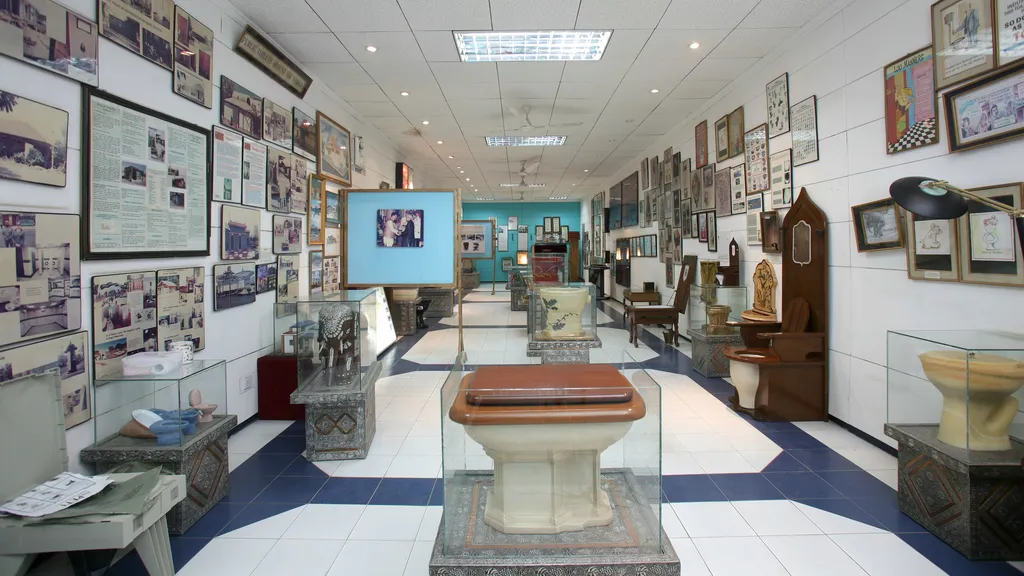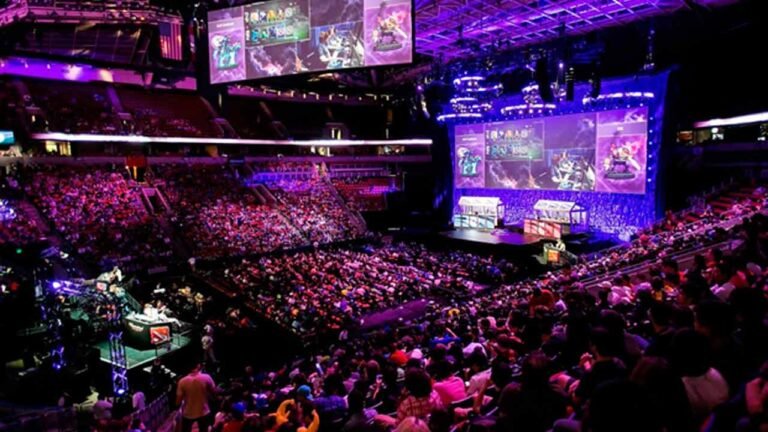
Introduction to Unusual Museums
The concept of museums has historically been synonymous with traditional institutions dedicated to preserving and showcasing art, history, and culture. However, a new wave of unusual museums has emerged, distinguishing themselves through their eccentric themes, unique collections, and innovative experiences. These museums often focus on niche subjects, celebrating the oddities and quirks that reflect the diversity of human experience. Rather than merely serving as repositories of artifacts, they strive to engage visitors in unexpected ways, prompting curiosity and often sparking joy.
The growing popularity of quirky museums around the globe can be attributed to several factors, including the desire for unique travel experiences and a shift in how people engage with culture. In a world where many seek out destinations that offer something beyond the standard tourist attractions, unusual museums provide an alternative approach to learning and entertainment. They invite visitors to explore unconventional collections, such as those dedicated to obscure hobbies, strange medical practices, or even the history of vending machines. Such niche topics resonate with an audience eager for authenticity and connection, allowing them to delve into the peculiar aspects of our world.
The Museum of Broken Relationships (Croatia)
Nestled in the vibrant city of Zagreb, Croatia, the Museum of Broken Relationships stands out as an intriguing cultural establishment that intricately weaves the narrative of love and loss. Opened in 2010, this museum is dedicated to honoring the emotional journeys stemming from broken relationships, making it a unique destination for visitors seeking to understand the complexities of human connections. The museum is distinguished by its collection of personal artifacts, each accompanied by poignant stories that reflect the themes of heartbreak and healing.
The concept of the Museum of Broken Relationships originated from the experiences of its founders, Olinka Vištica and Dražen Grubišić, who, after their own breakup, discovered the therapeutic nature of sharing stories associated with relationships that have ended. This innovative approach allows individuals from around the globe to commemorate their past romantic entanglements by donating items that symbolize their relationships, ranging from everyday objects to deeply personal mementos. These artifacts provide a window into the lives of others, revealing the universality of heartache and the shared human experience of love lost.
Visitors to the museum can expect to encounter a diverse collection that evokes a range of emotions, from nostalgia and sadness to contemplation and humor. Each displayed item serves as a reminder of the transient nature of relationships, showcasing the intricate tapestry of love and loss. Audio-visual installations further immerse guests in the emotional narratives, creating a reflective space that encourages introspection. The Museum of Broken Relationships ultimately operates on the premise that while love may fade, the memories and lessons learned endure, making it a worthwhile stop for anyone curious about the more unconventional avenues of art and human connection.
The Toilet Museum (India)
Situated in New Delhi, India, the Sulabh International Museum of Toilet History is a unique institution dedicated to the evolution of sanitation practices across the globe. This unusual museum embodies the rich history of toilets, revealing insights into how societies have perceived and managed hygiene through time. Spanning various eras and cultures, the exhibits serve as an educational platform, highlighting the connection between sanitation and human civilization.
The museum houses an extensive collection of artifacts that encapsulate the journey of toilets from ancient times to contemporary solutions. Visitors can explore fascinating displays, including replicas of toilets from different historical periods, such as the luxurious lavatories found in royal palaces to basic sanitation systems used by ancient civilizations. This showcases the diverse approaches to hygiene and sanitation that have developed in response to cultural, social, and technological influences.
Among the notable exhibits are examples of ancient Indian toilets as well as those from other civilizations, reflecting the varying perspectives on hygiene and waste disposal. There is a strong emphasis on the importance of sanitation in public health, and the museum also aims to create awareness about the challenges faced by communities lacking adequate hygiene facilities. Educational materials explain how cultural attitudes towards sanitation have transformed, paralleling advancements in technology and public health initiatives.
Moreover, the museum serves a significant role in advocating for better sanitation practices globally. By illustrating the historical and ongoing issues related to hygiene, it encourages visitors to contemplate the essential nature of clean sanitation. The Sulabh International Museum of Toilet History not only captures the evolution of toilets but also underscores the necessity of promoting hygiene standards that can lead to healthier communities in the future.
The International Cryptozoology Museum (USA)
Located in Portland, Maine, the International Cryptozoology Museum stands as a unique destination for those intrigued by the world of mythical creatures and cryptids. This museum, the first of its kind in the United States, was founded in 2003 by Loren Coleman, a well-known cryptozoologist who has dedicated his life to studying and documenting these elusive beings. The focus of the museum is to educate the public about cryptozoology: the study of and search for creatures whose existence has not yet been proven by mainstream science, such as Bigfoot, the Loch Ness Monster, and chupacabras.
The museum boasts an eclectic collection of artifacts, evidence, and exhibits that explore various aspects of cryptozoology. Visitors can find intriguing displays featuring alleged footprints, hair samples, and even casts of mysterious creatures. A significant part of the exhibition is dedicated to the folklore and cultural accounts related to cryptids, emphasizing how stories of these beings have permeated societies around the globe. The fascination with such creatures is not merely about proof; it encompasses a broader cultural dialogue about our fears, beliefs, and need for exploration.
In addition to static displays, the museum organizes lectures, discussions, and special events that invite both skeptics and believers to engage in discourse about the existence of these enigmatic beings. It serves as a hub for enthusiasts of the paranormal and unexplained, promoting an appreciation for the mysteries that still captivate the human imagination. By collecting and presenting evidence of cryptids, the International Cryptozoology Museum not only seeks to recognize the significance of these legendary creatures but also to foster a deeper understanding of what they represent in our collective psyche.
The Museum of Vintage Computers (USA)
The Museum of Vintage Computers, located in New Jersey and managed by the Vintage Computer Federation, stands as a testament to the transformative journey of computing technology. This unique museum showcases an extensive collection of vintage computers, gaming consoles, and peripheral devices that played pivotal roles in the evolution of information technology. By preserving these iconic artifacts, the museum offers visitors a rare glimpse into the past, where innovation and technology intermingled to shape the modern world.
Beginning with the early mechanical calculators of the 1960s and transitioning through to the first personal computers of the 1980s, the museum displays various models that illustrate significant milestones in computing. Notable pieces include the Apple I, one of the earliest personal computers, as well as the landmark IBM PC that revolutionized computing at home and in the workplace. Each exhibit is meticulously curated to offer insights into the technological advancements of their respective eras and how these devices influenced everyday life.
The significance of the Vintage Computer Federation Museum extends beyond its collections. It serves as an educational hub that promotes understanding of computing history through numerous workshops and interactive events. Visitors not only engage with static displays but can also attend demonstrations that highlight the operational capabilities of these vintage devices. By introducing the general public to the technological heritage that laid the groundwork for today’s digital society, the museum plays an essential role in preserving the legacy of computing.
In essence, the Museum of Vintage Computers is a valuable resource that showcases the remarkable evolution of computing technology. It provides an engaging environment where both enthusiasts and newcomers can appreciate the historical importance of these devices and their lasting impact on modern society.
The Cat Museum (Malaysia)
Located in the picturesque city of Kuching, Malaysia, The Cat Museum is a unique establishment dedicated to celebrating the cultural significance of cats. As a representation of the city’s affectionate attitude towards these beloved animals, the museum is often considered a treasure trove for feline enthusiasts and curious visitors alike. Spanning over a vast array of exhibits, the museum prides itself on its extensive collection of cat-related memorabilia, spanning various cultures and eras.
One of the prominent features of The Cat Museum is its diverse array of exhibits that showcase cat-inspired art, photographs, and sculptures. Visitors can explore the rich history and symbolism of cats in different cultures, such as their sacred status in ancient Egypt and their roles in folklore across the world. This collection not only engages feline lovers but also offers insights into how cats have influenced human societies throughout time.
Furthermore, The Cat Museum has made significant contributions to feline welfare. It collaborates with local animal rescue organizations to promote awareness about the importance of spaying, neutering, and adopting stray cats. By doing so, it endeavors to instill a sense of responsibility among the public towards animal welfare, encouraging a compassionate approach to caring for the feline population in and around Kuching.
Additionally, visitors to the museum can find various interactive exhibits, including photo opportunities and educational displays aimed at fostering a deeper appreciation for cats. The engaging environment invites individuals and families to learn more about these enchanting creatures. Overall, The Cat Museum serves as an enlightening destination that honors the enduring bond between humans and cats while promoting a better understanding of their needs and contributions to society.
The Salvador Dalí Theatre-Museum (Spain)
The Salvador Dalí Theatre-Museum, located in Figueres, Spain, is a remarkable tribute to one of the 20th century’s most influential surrealist artists, Salvador Dalí. Opened in 1974, the museum resides in a building that was originally the town’s theatre, which Dalí attended as a child. The architecture itself is an artwork, designed by Dalí to resemble a giant surrealist dream. With its striking pink façade, golden eggs on the roof, and whimsical shapes, the museum immediately captivates visitors and sets the stage for the eccentricity that unfolds within.
Inside, the Salvador Dalí Theatre-Museum boasts an extensive collection of the artist’s works, including oils, sculptures, and a variety of installations that showcase his unique approach to art. The museum contains over 1,500 pieces of Dalí’s work, providing a comprehensive exploration of his creative evolution. Notable highlights include the colossal painting “The Persistence of Memory,” along with various sculptures that reflect his fascination with dream imagery and the subconscious. Each piece invites contemplation, encouraging viewers to experience and interpret the surreal distinctly.
The ambiance within the museum mirrors Dalí’s playful yet thought-provoking style. Visitors can find themselves wandering through a labyrinth of surreal installations and unusual exhibits, including a room entirely dedicated to the “Hallucinogenic Toreador.” The museum’s layout and displays reflect Dalí’s eclectic vision of merging art with life, often blurring the lines between reality and imagination. This surreal environment immerses guests in an experience that extends beyond traditional museum visits, making the Salvador Dalí Theatre-Museum a compelling destination for those seeking to explore the depths of artistic expression.
The Miniature Museum (USA)
The Miniature Museum, located in San Antonio, Texas, is a unique establishment that invites visitors to explore the delicate art of miniature creation. This museum is renowned for its extensive collection of intricately designed miniature displays, each showcasing not only artistic talent but also a keen attention to detail. Within its walls, one can find a stunning array of tiny artworks, meticulously crafted to capture the imagination and awe of onlookers.
Craftsmanship is at the heart of the Miniature Museum’s offerings. Each display is the result of countless hours of dedicated work from skilled artisans who possess exceptional abilities in creating miniature worlds. The artistry involved in constructing these small-scale models ranges from intricate architectural replicas to detailed dioramas that portray various scenes from daily life and historical events. The painstaking process of building these exhibits requires precision and a level of artistry that is seldom seen in larger works. From the tiniest brushstroke to the smallest structural element, every aspect contributes to the overall visual impact of the displays.
What makes the Miniature Museum particularly fascinating is its appeal to visitors of all ages. Children are often drawn to the whimsy and imaginative possibilities presented within the displays, while adults appreciate the artistry and skill involved in miniature craftsmanship. The museum also serves as a platform for educational opportunities, encouraging discussions about art, history, and craftsmanship. Special events and workshops are frequently held, allowing attendees to engage with the artists and gain insight into the techniques that bring these miniature worlds to life. Thus, a visit to the Miniature Museum provides a perfect combination of cultural enrichment and visual delight, making it a must-visit destination for art and craft enthusiasts.
Conclusion: The Value of Exploring Unusual Museums
Exploring unusual museums provides an opportunity to delve into the diverse tapestry of human culture and creativity that often goes unrecognized in more traditional settings. These unconventional attractions serve as windows into specialized themes, showcasing the breadth of human experience in unique and engaging ways. Unlike typical museums that mainly focus on mainstream narratives, unusual museums can reveal the idiosyncrasies of society, highlighting local customs, eccentric hobbies, and even the unexpected intersections of art and everyday life.
These museums often reflect the passions and quirks of individuals, allowing visitors to engage with history and culture from refreshing perspectives. For instance, visiting a museum dedicated to a particular niche, such as the history of mannequins or the evolution of toothbrushes, can spark curiosity and provoke thoughtful reflections on familiar objects from a new angle. Such experiences reinforce the idea that history is not a monolithic narrative, but a complex interplay of myriad stories shaped by human ingenuity and imagination.
Moreover, frequenting these offbeat institutions fosters a sense of adventure and discovery, encouraging travelers to wander beyond the well-trodden paths of conventional tourism. These visits can enrich one’s journey, transforming mundane sightseeing into a quest to uncover hidden gems of human expression and intellect. Consequently, engaging with unusual museums enhances one’s understanding of global cultures and promotes appreciation for the diversity of perspectives that exist within the world.
In conclusion, making the effort to explore unusual museums during your travels not only broadens your understanding of different cultures but also enriches your travel experiences. Embracing the unconventional can yield surprising insights and inspire a greater appreciation for the myriad expressions of human creativity that make our world so intriguing.




